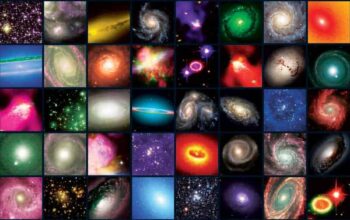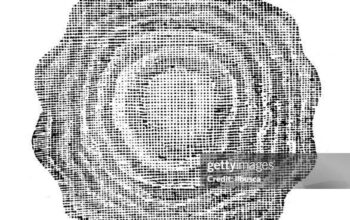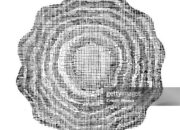The exploration of binary asteroids presents an intriguing facet of planetary science, particularly when analyzed through the lens of radar astronomy. In essence, a binary asteroid system encompasses two celestial bodies—often comprising one larger primary body and a smaller secondary body, or “satellite,” that orbits around it. Radar observations have unveiled remarkable insights into these systems, illuminating the characteristics and dynamics that govern their behavior.
A binary asteroid’s radar signature can produce a fascinating array of signals, which vary according to the relative positions and motions of each constituent. When radar waves are transmitted toward an asteroid, they interact with its surface and return with information that can be deciphered into a three-dimensional representation of the object. The particularly telling aspect of binary systems is the manner in which the radar echoes reveal not only the shape and size of the primary body but also the secondary body’s characteristics and its orbital parameters.
The first key area of focus involves the radar observations themselves. Radars, typically employed on large terrestrial telescopes, enable astronomers to glean critical data such as the distance to the asteroid, its orbital dynamics, and surface features. For instance, when dual echoes arise from the system, one from the primary and another from the secondary, researchers can extract invaluable measures of both the size and spin of the asteroids involved, as well as their surface roughness—an essential factor in assessing the geological history of these bodies. Furthermore, radar signals can penetrate the dust layers obscuring the surface, thus revealing otherwise hidden details.
One notable example within this realm is the binary asteroid 1999 JU3, which has garnered attention for its peculiar shape and composition. The use of radar to study such formations unveils their enigmatic features. For instance, 1999 JU3 exhibits a distinct elongated shape, suggestive of a history marked by catastrophic collisions or gravitational interactions with other bodies. The round-trip light-time measurement, facilitated by radar techniques, aids in constructing the tempo of its rotational motion, giving insight into its internal structure and potential porosity.
Next, the gravitational interplay between the primary and secondary asteroids is another subject of extensive investigation. Researchers have noted that binary asteroids often form under a unique set of conditions that leads them to exhibit specific physical attributes, such as a lower density compared to solitary bodies. The gravitational binding between the two components may result in a complex orbit that could reveal the history of their formation. The radar observations can discern the orbital period of the satellite with precision, thereby providing clues on their mutual gravitational relationship.
Additionally, the phenomenon of spin-orbit coupling in binary systems further complicates our understanding of their evolution. The interaction between the spin of both the primary and secondary bodies leads to fascinating dynamical scenarios. Through precise measurements from radar, questions of tidal locking and rotational dynamics can be explored, offering implications for the thermal evolution of these bodies. This interplay highlights how the environment of the binary system influences surface processes and thus contributes to a deeper understanding of asteroid geology.
When discussing the potential threats posed by these entities, it becomes imperative to examine how radar observations play a crucial role in planetary defense initiatives. The detection of binary asteroids offers a critical advantage; the presence of a secondary body can sometimes attenuate the risk posed by the larger body. In instances where a primary asteroid is on a collision course with Earth, the secondary body may alter the trajectory as a result of its gravitational influence. Understanding this dynamic is key in estimating potential impact risks; thus, radar plays an instrumental role in tracking and characterizing these systems.
The radar analysis of binary asteroids also provides an opportunity to probe deeper into the rich tapestry of the solar system’s formation. By studying the diverse characteristics of these celestial pairs, scientists can ascertain links to primordial formation theories. For example, merging asteroid families or fragments from larger parent bodies serve as a testament to the violent history of our solar system. Such dynamics can be elucidated through radar, revealing distinguishing features that indicate whether a binary asteroid is a product of catastrophic fission or the remnants of a merger.
In addition to planetary science, the ramifications of binary asteroids extend into the realm of future space exploration. As missions are proposed to study or even retrieve samples from binary systems, understanding their physical properties becomes pivotal. The yield of scientific information requires that explorers are equipped with comprehensive radar data to navigate these complex systems successfully. The intricacies of the surfaces, the stability of the orbits, and the comparative weights of the components are all focal points that could be addressed through preliminary radar studies.
In conclusion, the exploration of binary asteroids via radar astronomy presents an exhilarating intersection of disciplines, from planetary defense and evolutionary biology to astronomical observations and future exploration objectives. Each radar echo contributes to not only our understanding of binary systems but also broadens our comprehension of the solar system’s history and its dynamic processes. The dazzling array of signals these cosmic duos emit offers a rich area of research that continues to challenge and engage the scientific community, piecing together evidence of our celestial neighbors’ past, present, and future.










